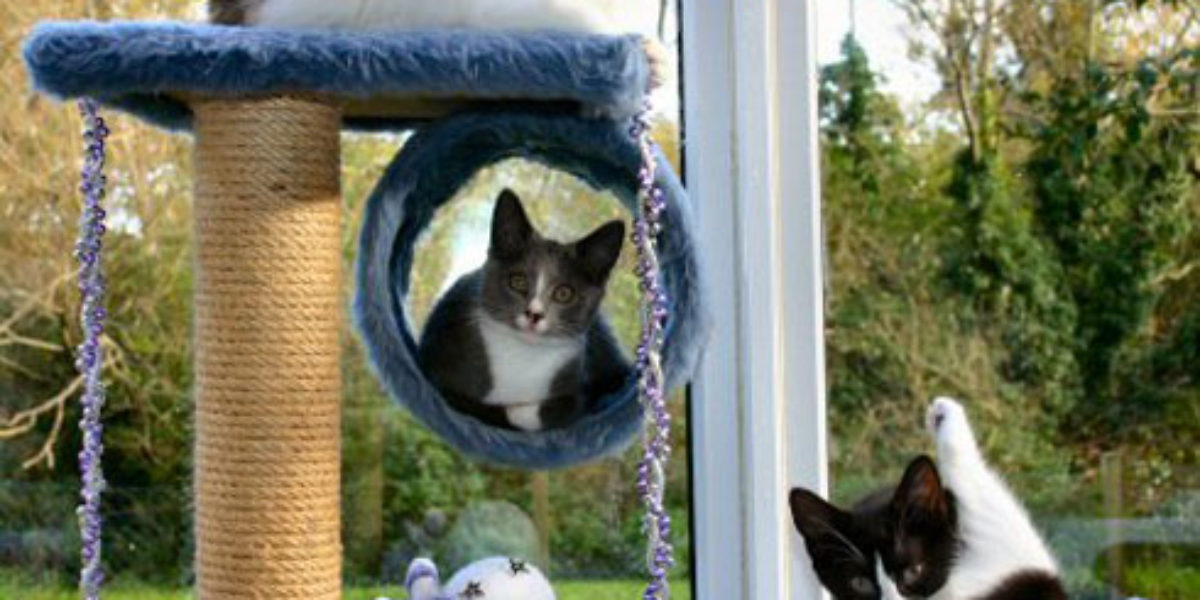Cats need to scratch to keep their claws sharp, exercise and stretch their muscles and mark their territory.
If you fail to provide an acceptable area to scratch then your carpets, furniture and wallpaper may get damaged. Once a cat finds an attractive area to scratch they will always return to it! Scratching posts come in all shapes and sizes and are an essential addition to your home. They often include upright wooden posts covered with thick sisal twine or carpet together with platforms, beds, hiding boxes and dangling toys for the more energetic individuals. Scratching posts can be free-standing or designed to fix to a wall or floor.
Before you choose one for your cat you may want to consider these criteria:
- Ensure the post is rigid; cats need resistance when they scratch to do the best job
- Make sure it’s tall enough for your cat to scratch at full stretch. If you buy one for your kitten you will need to change it when it grows up
- Make sure you offer opportunities for your cat to scratch both horizontal and vertical surfaces
- If it is a tall modular scratching post with various platforms and bed attachments it must be stable. There is nothing worse than a tall scratching post that falls over when your cat launches itself at full speed
- If you purchase a tall scratching unit that, once assembled, seems unstable, you may get a more rigid unit if you attach it via a bracket to the wall
There are a number of ways to ensure your cat makes use of any available scratching post. It would be most attractive if you place it near a window or radiator in a room your cat particularly favours, particularly if it is one of the larger designs that incorporate platforms and beds in the structure. Cats like to stretch and scratch when they first wake up so it’s always beneficial to have an acceptable scratching area near your cat’s bed. Do not encourage your cat to scratch by grasping its paws and showing it what to do or pay particular attention to the scratching post when it first arrives as this may well dissuade your cat from going anywhere near it! If your cat doesn’t show any interest in the post then try sprinkling a little dry catnip plant over the base, or play a game with your cat with a fishing rod toy round the post or panel to encourage a connection between claws and the scratching surface; this often promotes scratching. You could even try placing a small handful of dry food on one of the platforms, if it is a tall modular post, to encourage your cat to jump up and explore.
You don’t have to spend a fortune on scratching posts; some of the most popular ones are ingenious designs using only corrugated cardboard. If space is an issue in your home you can always purchase a flat panel that can be fixed to your wall at the appropriate height. You can of course be adventurous and make one of your own. Don’t worry about inadvertently training your cat to use your carpets if you cover the post with a similar material, if you are making your own then use a piece of hard wearing carpet recommended for heavy traffic areas and it will be more durable and probably remain the only target for your cat’s claw maintenance.
Thank you for visiting our website, we hope you have found our information useful.
All our advice is freely accessible to everyone, wherever you are in the world. However, as a charity, we need your support to enable us to keep delivering high quality and up to date information for everyone. Please consider making a contribution, big or small, to keep our content free, accurate and relevant.
Support International Cat Care from as little £3
Thank you.
Donate Now


